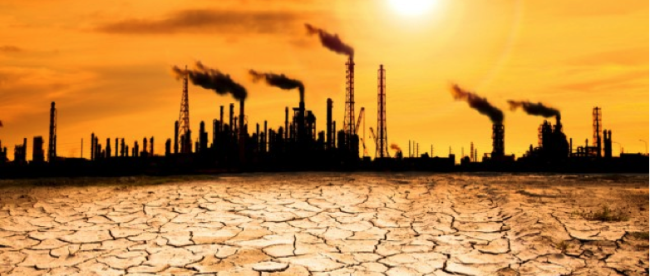Global Warming and the Law: Why Legal Technicalities are Harming Our Environment

By Danny Ho
The global warming controversy encompasses the on-going dispute about whether or not human activities, such as carbon dioxide emissions from automobiles, affect the global climate. Studies from scientific journals, such as the Environmental Research Letters, show that the general scientific community attributes global warming to human action. The Obama administration operates under the same belief and has pushed for the Clean Power Plan (CPP) in order to curb carbon dioxide emissions. The Environmental Protection Agency (EPA) proposed the CPP, calling for stricter standards on carbon dioxide emissions from U.S. power plants operating on coal and gas. Over half the states are against the CPP, arguing that the EPA is overstepping its legal authority. The CPP is currently in limbo because the Supreme Court has halted implementation of it until the D.C. Circuit Court decides on its legality. Regardless of the outcome in the D.C. Circuit Court, the decision will likely return to the Supreme Court for a final ruling.
The need for the CPP is clear to its supporters. Global carbon dioxide emissions have increased by about a third since the Industrial Revolution, primarily as a result of the burning of fossil fuels. As a result, carbon dioxide emissions are the biggest contributors to increasing global temperatures. A warmer climate could be catastrophic because it could lead to an increase in extreme weather patterns, higher wildlife extinction rates, reduction in crop growth and displacement of coastal populations as sea levels rise. By reducing carbon dioxide emissions, the CPP is designed to prevent these disastrous and global consequences.
The major arguments against the CPP are more technical and far less policy-oriented. Opponents argue that the CPP is unconstitutional because it infringes on state sovereignty—the idea that each state has a right to exercise exclusive control within their boundaries over issues that the Constitution has not explicitly relegated to the federal government. Opponents also claim that the CPP was incorrectly promulgated through Section 111(d) of the Clean Air Act because the Act already regulates power plant emissions under Section 112 and the Act also prohibits the EPA from regulating anything already controlled by another provision of the Act.
Despite its opponents, the CPP should still stand. It is consistent with the Clean Air Act’s statutory requirement that proposed regulations should conform to the “best system of emission reduction.” This requirement takes into account the cost of achieving emission reductions, the non-air quality health, the potential environmental impact, and any energy requirements. The EPA even estimates that the CPP will lead to climate and health benefits equal to about $25 to $45 billion per year in 2030 and that those benefits could include the avoidance of hundreds of thousands of asthma attacks among children and thousands of premature deaths. In addition, the EPA also projects that after an initially modest rise in electricity bills by 2.4 to 2.7 percent in 2020, the CPP will eventually start saving Americans money in as early as 10 years. These projections arguably fit into the broad definition of the required “best system of emission reduction.”
But perhaps the more powerful argument for the CPP is the one that directly cuts against the technical argument that the CPP was incorrectly promulgated under Section 111(d) of the Clean Air Act. When the Clean Air Act was first enacted in 1970, Congress made clear that Section 111(d) was meant to perform a “gap-filling” role to provide the EPA with broad authority to protect the public from dangerous pollutants. In addition, Congress in its 1990 amendments to the Clean Air Act expressly stated, “no emission standard or other requirement promulgated under this section shall be interpreted, construed, or applied to diminish or replace the requirements of a more stringent emission limitation or other applicable requirement established pursuant to Section 111.”
Thus, any future EPA regulation made by the EPA under Section 111 cannot be nullified simply because another section of the Act may already exercise some control over the emissions seeking to be further regulated. The EPA has persuasively labeled opponents’ technical argument as a “pick-your-poison” limitation because it would limit the EPA to regulating either one pollutant or another, but not both.
At best, the arguments against the CPP seem to be standing on weak legislative and constitutional reasoning. As a result, it seems likely that the D.C. Circuit Court will uphold the constitutionality of the CPP. Although we can never to be certain how the D.C. Circuit Court will decide, what is clear is that there are strong policy grounds for implementing the CPP. Indeed, an overwhelming majority of the scientific community agrees that the safety of our planet is potentially at stake due to carbon dioxide emissions. The Court would be wise to consider the consequences to public safety and global stability above arguments of legal formality.
